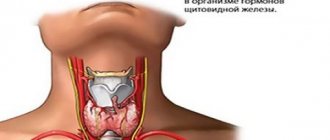Published: 05/19/2021 11:00:00 Updated: 05/27/2021
Cholestasis is a clinical and laboratory syndrome in which the production of bile is impaired or its outflow into the duodenum is completely or partially blocked.
The condition can be caused by various diseases. It is characterized by the accumulation of substances excreted in bile in the blood, which is accompanied by skin itching, weakness, jaundice and other manifestations.
Diagnosis of pathology is based primarily on test data, as well as instrumental research methods.
Treatment of cholestatic syndrome includes medication, diet and, in some cases, surgery on the liver and biliary tract.
Prevalence and characteristics of cholestasis
According to statistics, this pathology affects 1 person per 10 thousand of the planet’s population per year.
Moreover, about 50-70% of people with diseases of the liver and biliary tract (even previously treated) may experience cholestasis to one degree or another at different periods of life. Most of the patients are male and over 40 years of age. Among pregnant women, the condition is detected from 0.2 to 27% of those examined, depending on the region and additional diseases and conditions.
Manifestations of cholestasis syndrome have the following mechanisms:
- entry of bile components into the bloodstream;
- absence or insufficient amount of secretion in the intestines, which impairs digestion (bile is involved in the digestion of food);
- stagnation and reverse flow of fluid along the biliary tract.
Causes and types of cholestatic syndrome
There are two main forms of pathology - extrahepatic and intrahepatic.
The first develops in the case of complete or partial blockage of the bile ducts, most often with stones in cholelithiasis and choledocholithiasis, as well as in tumors of the organs of the hepatobiliary system, dysfunction of the sphincter of Oddi, opisthorchiasis, congenital anomalies of the biliary tract. Intrahepatic cholestasis is a consequence of diseases of the hepatocellular system, such as hepatitis of viral, alcoholic and drug origin, fatty liver disease (a fairly common pathology of modern humans, affecting up to 20% of people or more, depending on age and body weight) and its autoimmune lesions, defects intrahepatic ducts.
Frequent causes of pathology also include congenital metabolic disorders (galactosemia, cystic fibrosis and others), sarcoidosis, and hormonal changes, for example, during pregnancy.
Clinically, cholestatic syndrome can manifest itself in anicteric and icteric forms, and also have an acute or chronic course. There are three types of violations:
- Partial cholestasis - decreased bile secretion.
- Dissociated cholestasis is the retention of individual components of bile.
- Total cholestasis is characterized by severe disturbances in the flow of bile into the intestines.
Manifestations of bile stagnation
Symptoms of cholestasis may differ in different forms of the disease, and in some cases are almost completely absent. The following manifestations help to suspect pathology:
- Skin itching. The symptom worsens in the evening and after contact of the skin with warm water. This provokes the appearance of scratches and pustular rashes on the skin. The patient becomes anxious, irritable, and suffers from insomnia.
- Feeling of fullness and pain in the hypochondrium on the right side. The latter can “give” to the right shoulder blade, arm, collarbone, and lumbar region.
- Changes in skin and mucous color. This usually manifests itself as yellowing of the sclera of the eyes, then the yellowness spreads to other parts of the body. Hyperpigmentation, a darkening of the skin, may also occur.
- Abnormal stool. Cholestasis is characterized by discolored yellow, gray or white stool. Due to the abundance of fats, it becomes liquid and has a foul odor. Later, indigestion and constipation occur.
- Skin formations. You can see xanthomas (thickened areas of rough skin on the body that are brown or yellow) on the chest, back, and elbows. Symmetrical yellow formations on the eyelids are called xanthelasmas. They appear when the amount of cholesterol in the blood increases for three or more months and may disappear after it normalizes.
- Dyspeptic disorders. There is a bitter taste in the mouth, nausea and vomiting are noted. Appetite is often reduced or absent, causing the patient to lose weight.
- Darkening of urine. The released liquid changes from straw-yellow to the color of “dark beer.”
- Signs of hypovitaminosis (due to impaired absorption of fats, the absorption of fat-soluble vitamins - A, D, E, K) is impaired. With prolonged cholestasis, vitamin K is not sufficiently absorbed from the intestine, and increased bleeding occurs. Vitamin D deficiency is accompanied by brittle bones and pain in the limbs and back. With poor absorption of vitamin A, distance vision deteriorates, and a person sees worse in the dark. Vitamin E deficiency reduces libido.
Cholestasis in pregnant women and children
Such forms of pathology as cholestasis during gestation and childhood deserve special attention.
In these cases, the mechanism of development of disorders and symptoms have their own characteristics. Manifestations of cholestasis in pregnant women are observed in the third trimester. Skin itching can be pronounced or cause virtually no discomfort. Scratching is most often observed on the arms, legs, and forearms. Jaundice occurs in only one in ten women and usually goes away on its own two weeks after birth. However, with severe jaundice and early onset (before the 25-27th week of pregnancy), it may increase the risk of complications during childbirth.
Childhood cholestasis can be observed both from the first months of life and appear at an older age. In infancy, intrahepatic cholestatic syndrome caused by congenital metabolic disorders, idiopathic neonatal hepatitis and bile duct malformations are more common. Causes of cholestasis can also be infections, toxic organ damage, liver cirrhosis, cardiovascular failure, pancreatic tumors, parasitic lesions, sclerosing cholangitis.
The danger of cholestasis is that it develops in children in a latent form. Symptoms depend on the age at which the disease began and the characteristics of the body.
3.How the analysis is carried out and the risks of analysis
How is a blood alkaline phosphatase test performed?
A blood alkaline phosphatase test is performed after drawing blood from a vein. Blood sampling from a vein is carried out according to a standard procedure.
Risks of Alkaline Phosphatase Blood Tests
If you are donating blood for an alkaline phosphatase blood test, then possible risks may only be associated with taking blood from a vein. In particular, the appearance of bruises at the site of blood sampling and inflammation of the vein (phlebitis). Warm compresses several times a day will relieve phlebitis. If you are taking blood thinning medications, you may bleed at the puncture site.
Diagnosis of pathology
Diagnosis and treatment of cholestasis syndrome is carried out by a gastroenterologist.
Some patients mistakenly consult a dermatologist, focusing only on itchy skin and not taking into account other symptoms. A conversation with a patient and an external examination of the patient’s skin and mucous membranes allow the doctor to suspect a pathology. Palpation and percussion often reveal an enlarged liver and painful areas. Often, cholestatic syndrome is almost asymptomatic, and its presence is indicated only by laboratory tests. They consist of determining the level of bilirubin, cholesterol, alkaline phosphatase, enzymes and bile acids in the blood, and bile pigments in the urine.
A general blood test for cholestasis is characterized by anemia, leukocytosis, and elevated ESR values. A biochemical blood test reveals hyperbilirubinemia (due to direct (conjugated) bilirubin), hyperlipidemia, increased activity of enzymes such as alanine aminotransferase (ALT), aspartate aminotransferase (AST), alkaline phosphatase (ALP), gammaglutamyl transpeptidase (GGTP). The detection of antimitochondrial, antinuclear antibodies and antibodies to smooth muscle cells allows us to suspect autoimmune liver damage as a possible cause of cholestasis.
Instrumental diagnosis of cholestasis involves ultrasound and X-ray examination of the abdominal organs, gastro- and duodenoscopy, magnetic resonance or endoscopic retrograde cholangiopancreatography, percutaneous transhepatic cholangiography. The diagnosis can be established at any stage, even just after performing laboratory tests and ultrasound; not all of the above studies will necessarily be required for diagnosis.
If the results of the examinations are doubtful, then they resort to a liver biopsy (which can also be prescribed at any stage of the diagnostic search).
What is alkaline phosphatase
The enzyme alkaline phosphatase is present in most tissues of the human body. ALP is included in the liver indicators because it is in this organ that it is most abundant (the concentration is also high in the bones, kidneys, gall bladder and intestines). Accordingly, the activity of total alkaline phosphatase can be used to monitor diseases of these parts of the body: if it increases, this is a beacon - Houston, we have problems.
Researchers still have not figured out all the intricacies of alkaline phosphatase. But its main functions include:
- transporting nutrients and other enzymes to the liver
- participation in the formation and growth of bones
- transport of fatty acids, phosphates and calcium into the intestines
- digestion of fat in the intestines
- regulation of cell growth, migration and death during fetal development
Normal level of alkaline phosphatase in blood serum is 1-3 mmol/hour/l
Typically, children have much higher ALP levels than adults because their bones are growing. In a person with a fracture, alkaline phosphatase levels may also be elevated: this is normal for three months after the injury while the bone heals. In addition, high levels of ALP are characteristic of the second and third trimesters of pregnancy. In other cases, a deviation from the norm may be a direct indication of the development of the disease. Mostly suspicion falls on the liver and bones.
Treatment of cholestasis
The first measure when cholestasis is detected or suspected is nutritional correction.
A special feature of this diet is the replacement of animal fats with vegetable fats. It is recommended to eat more vegetables and fruits, choose lean meats and types of dairy products. Cereal-based porridges are also useful. It is necessary to limit fried, smoked and spicy foods. You should completely avoid alcohol, strong coffee and tea. For the treatment of cholestasis, medications of different groups can be prescribed:
- hepatoprotectors;
- antibiotics;
- cytostatics;
- ursodeoxycholic acid preparations.
For signs of hypovitaminosis, multivitamin complexes are also recommended.
In the fight against skin itching, the first-line drugs are bile acid derivatives, which bind bile acids from bile in the lumen and prevent their transport into the bloodstream. The effectiveness of CNS opiate receptor blockers has been proven. During the rehabilitation period, non-drug methods are used to increase the body's defenses - physiotherapy, massage, physical therapy. Treatment of pregnant women is complicated by risks to the fetus when using medications, therefore, to reduce symptoms, they resort first of all to simple and safe means - oatmeal masks, chamomile decoction, and the use of baby cream.
Cold water and sleeping in a cool room relieve itchy skin. However, if it is strengthened, the doctor may prescribe bile acid preparations approved for use in pregnant women (in particular, ursodeoxycholic acid). These drugs are determined by the American Food and Drug Administration (FDA) based on clinical studies. Drugs for which sufficient data have been accumulated on their use in pregnant women are assigned by this organization to the appropriate group (category of action on the fetus).
For successful treatment of cholestasis in children, it is important to promptly establish the cause of this syndrome. Often the pathology in this group of patients cannot be cured with medications alone; then surgery is performed.
In adults, surgical intervention is also often required to relieve the causes of cholestasis. There are several surgical treatment options available:
- plastic surgery of the biliary tract and anastomosis;
- external drainage of the bile ducts;
- removal of stones from the cavity of the gallbladder or the organ itself.
Procedure
As with any blood test, you need to properly prepare for the ALP test.
The preparation rules for all biochemical analyzes are the same:
- at least one day before collecting materials, you must exclude alcohol and fatty foods;
- On the morning of donating blood, you should skip breakfast and only drink a little water.
Advice! It must be remembered that the level of the alkaline phosphatase enzyme is influenced by taking many medications, including hormonal contraceptives. Therefore, it is important to warn the doctor that the patient is taking any medications.







